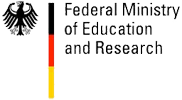| Foto | First Name | Last Name | Position |
|---|---|---|---|
 |
Vera | Demberg | Cognitive Models of Human Language Processing and their Application to Dialogue Systems |
 |
Elmar | Eisemann | Computer Graphics and Visualization |
 |
Markus | Flierl | Visual Sensor Networks |
 |
Markus | Flierl | Visual Sensor Networks |
 |
Stefan | Funke | Geometry-Guided Design and Analysis of Wireless Sensor Networks |
 |
Stefan | Funke | Geometry-Guided Design and Analysis of Wireless Sensor Networks |
 |
Joachim | Giesen | Learning of Geometry: Given samples obtained from a shape we want to learn some of its geometric and topological characteristics. A popular example that fits in this framework is surface reconstruction: to obtain a digital model of some solid one samples |
 |
Joachim | Giesen | Learning of Geometry |
 |
Stefan | Gumhold | 3D Animation Processing |
 |
Stefan | Gumhold | 3D Animation Processing |
Researcher
 |
Dr. Michael Zollhöfer |
Visual Computing, Deep Learning and Optimization
| Name of Research Group: | Visual Computing, Deep Learning and Optimization |
| Homepage Research Group: | web.stanford.edu/~zollhoef |
| Personal Homepage: | zollhoefer.com |
| Mentor Saarbrücken: | Hans-Peter Seidel |
| Mentor Stanford: | Pat Hanrahan |
| Research Mission: | The primary focus of my research is to teach computers to reconstruct and analyze our world at frame rate based on visual input. The extracted knowledge is the foundation for a broad range of applications not only in visual effects, computer animation, autonomous driving and man-machine interaction, but is also essential in other related fields such as medicine and biomechanics. Especially, with the increasing popularity of virtual, augmented and mixed reality, there comes a rising demand for real-time low latency solutions to the underlying core problems. My research tackles these challenges based on novel mathematical models and algorithms that enable computers to first reconstruct and subsequently analyze our world. The main focus is on fast and robust algorithms that approach the underlying reconstruction and machine learning problems for static as well as dynamic scenes. To this end, I develop key technology to invert the image formation models of computer graphics based on data-parallel optimization and state-of-the-art deep learning techniques. The extraction of 3D and 4D information from visual data is highly challenging and under-constraint, since image formation convolves multiple physical dimensions into flat color measurements. 3D and 4D reconstruction at real-time rates poses additional challenges, since it involves the solution of unique challenges at the intersection of multiple important research fields, namely computer graphics, computer vision, machine learning, optimization, and high-performance computing. However, a solution to these problems provides strong cues for the extraction of higher-order semantic knowledge. It is incredibly important to solve the underlying core problems, since this will have high impact in multiple important research fields and provide key technological insights that have the potential to transform the visual computing industry. In summer 2019 Michael Zollhöfer joined Facebook. |
Researcher
- Name of Researcher
- Martin Bokeloh
- Homepage of Research Group
- First Name
- Martin
- Last Name
- Bokeloh
- Foto

- Phone
- Position
- Inverse Procedural Modeling
- Mentor in Saarbruecken
- Hans-Peter Seidel
- Mentor in Stanford
- Vladlen Koltun
- Categories
- Former Groups
- Research Mission
- Creation of high-quality content for virtual environments has become a major bottleneck in movie and game productions. Large collections of 3D objects are already available, however, these objects rarely fit into a specific scenario and need to be manually adapted to meet artistic and technical constraints which is, even with modern design tools, a tedious task that requires elaborated artistic and technical skills. Our goal is to develop data-driven techniques that allow novice users to create appealing 3D objects or assist experienced artists to generate high-quality content faster. A key challenge in data-driven modeling is to understand the structure of a 3D object. We seek to find formal models that reflect the structure of objects and allow structure-aware modification of existing objects or synthesis of new objects yielding a similar structure. Low-level cues like symmetry and regularity are crucially important for a shapes' appearance and thus are strong sources of information. However, they represent only a fraction of what humans would consider as structure. Consequently, we want to incorporate various aspects of 'structure' in our formal models such as semantic information from labeled training data or the interplay between different symmetries and regularities. We consider the search of a descriptive, compact, and applicable formal model as one of the fundamental challenges in the area of shape understanding. Martin Bokeloh joined Google Inc. in 2013.
- mission_rtf
- Name of Research Group
Personal Info
- Photo

- Website, Blog or Social Media Link



